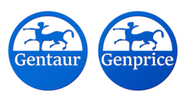Description
Growth Hormone Antibody [GH/1371] | 33-738 | Gentaur UK, US & Europe Distribution
Host: Mouse
Reactivity: Human
Homology: N/A
Immunogen: Amino acids 58-187 from the human protein were used as the immunogen for this Growth Hormone antibody.
Research Area: Cell Cycle, Signal Transduction, Cancer, Neuroscience
Tested Application: WB, Flow, IHC-P, IF
Application: Flow Cytometry: 0.5-1ug/10^6 cells
IF: 1-2 ug/ml
IHC (FFPE) : 0.5-1 ug/ml for 30 min at RT
Titration of the Growth Hormone antibody may be needed for optimal performance.
Specificiy: N/A
Positive Control 1: N/A
Positive Control 2: N/A
Positive Control 3: N/A
Positive Control 4: N/A
Positive Control 5: N/A
Positive Control 6: N/A
Molecular Weight: N/A
Validation: N/A
Isoform: N/A
Purification: Protein G affinity chromatography
Clonality: Monoclonal
Clone: GH/1371
Isotype: IgG2b
Conjugate: Unconjugated
Physical State: Liquid
Buffer: PBS with 0.1 mg/ml BSA and 0.05% sodium azide
Concentration: 0.2 mg/mL
Storage Condition: Aliquot and Store at 2-8˚C. Avoid freez-thaw cycles.
Alternate Name: GH1, Growth hormone, GH, GHN, IGHD1B, GH-N, Pituitary growth hormone, Growth hormone 1, HGH-N, Somatotropin
User Note: Optimal dilutions for each application to be determined by the researcher
BACKGROUND: Growth hormone (GH) , also known as somatotropin (or as human growth hormone [hGH or HGH] in its human form) , is a peptide hormone that stimulates growth, cell reproduction, and cell regeneration in humans and other animals. It is thus important in human development. It is a type of mitogen which is specific only to certain kinds of cells. Growth hormone is a 191-amino acid, single-chain polypeptide that is synthesized, stored, and secreted by somatotropic cells within the lateral wings of the anterior pituitary gland.
GH is a stress hormone that raises the concentration of glucose and free fatty acids. It also stimulates production of IGF-1.
The major isoform of the human growth hormone is a protein of 191 amino acids and a molecular weight of 22, 124 daltons. The structure includes four helices necessary for functional interaction with the GH receptor. It appears that, in structure, GH is evolutionarily homologous to prolactin and chorionic somatomammotropin. [Wiki]

![Growth Hormone Antibody [GH/1371] Growth Hormone Antibody [GH/1371]](https://cdn11.bigcommerce.com/s-1rdwiq712m/images/stencil/608x608/products/483968/489797/gentaur-genprice__26005.1661610467__29809.1661628092__75433.1661676199__77988.1661684280__64362.1661692443__02085.1662049603__45075.1662119302__91744.1662191540__21580.1662291419__75360.1663498796.png?c=1)

![Growth Hormone Antibody [GH/1450] Growth Hormone Antibody [GH/1450]](https://cdn11.bigcommerce.com/s-1rdwiq712m/images/stencil/590x590/products/483969/489798/gentaur-genprice__26005.1661610467__29809.1661628092__75433.1661676199__77988.1661684280__64362.1661692443__02085.1662049603__45075.1662119302__91744.1662191540__21580.1662291419__86514.1663498796.png?c=1)






